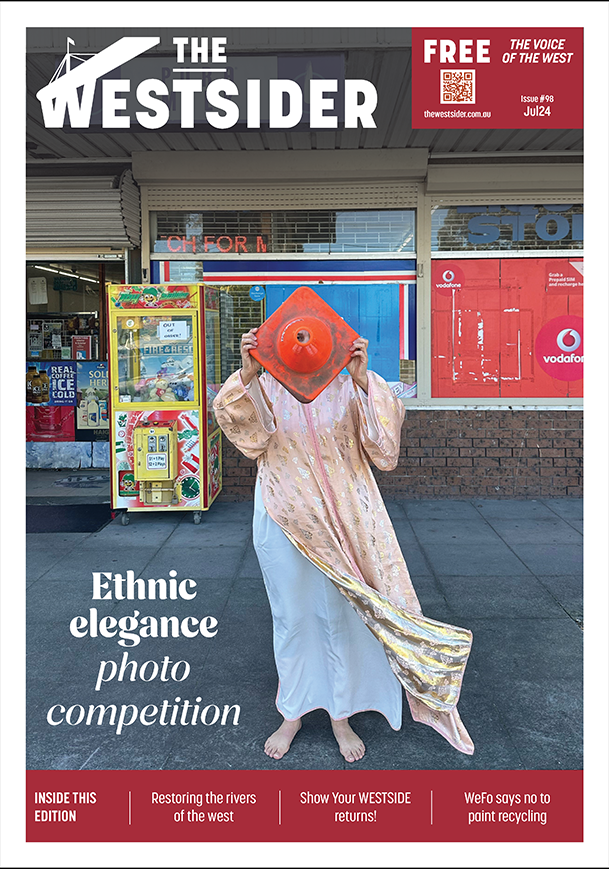By Peter Dewar
Some say it’s Footscray’s future. The State Trustees’ monolith certainly casts a shadow over the precinct. Not to mention a century-old brick building in Nicholson Street – home to the Footscray Mechanics’ Institute. Which incidentally, like the thousand or so Mechanics’ Institutes dotted around Australia, could do with a lick of paint. Absent is any obvious hint this was once a popular hub of learning, art and entertainment – vital to an expanding river-side city.
The Australian Mechanics’ Institute movement has largely gone unacknowledged. It’s all in a name: the ‘Mechanic’ nomenclature has contributed to the confusion. Today the term conjures up an image of a grease monkey, head under a car bonnet. But, in 1799, when Dr George Birkbeck controversially began offering free lectures in Glasgow, Scotland, ‘mechanic’ meant artisan or tradesman. In essence, a working man. The push to educate the working class was part of a broader movement to upend a tyrannical social structure. In its day, a radical idea. “The ruling classes wanted to be assured of having cheap labour and didn’t want to educate the working classes,” says Pam Baragwanath in an interview on ABC radio. Pam is co-author of ‘These walls speak volumes: a history of Mechanics’ Institutes’. “Mechanics Institutes wanted equality … and they wanted an egalitarian society.”
From the early 1800s, Mechanics’ Institutes began popping up in towns across sunburnt Australia. Filled with books, these centres of learning and self improvement would turn out to be forerunners of our public libraries and adult education system. Locals raised the funds to establish their own institute. “For the community, by the people,” says Pam. “That’s the amazing thing about it.”
The Melbourne Athenaeum in Collins Street, which still operates as a library, was founded in 1839 as a Mechanics’ Institute. Since 2003, it’s has been home to the Melbourne Opera. The Athenaeum may be considered a Mechanics’ Institute grand dame. But, divert from a 110 km highway and drive through a country town – you’re likely to find a tired old building called Mechanics’ Institute. It was once the heart of a local community.
Over a century ago, local James Young started a modest Mechanics’ Institute and free library in Pilgrim Street, Footscray. It relocated to Austin Street, and in the the early 1900s, to its present location. The Footscray institute is only one of a handful still operating as a library and has the rare distinction of carrying the largest collection of Mills and Boon’s romance novels. Luke Mitchell is the dedicated manager and librarian. Right now, he’s acting historian: “Local children borrowed from the Council library. Adults came here to get their books.”
Luke says the walls are about to get that fresh coat of paint. Until recently, faded photos yellowing documents and old-time artefacts decorated a library the size of a contemporary living room. On a shelf was a Webster dictionary as thick as concrete block. A pendulum-driven clock hung near the fiction section. “It kept the right time for about three days.”
An image of a bearded indigenous man is blue-tacked to a corner wall. It’s obviously been forgotten, or too small to worry about in the preparation for a repaint. Typed in italics below the picture it says: “Barak, 1813-1903, last leader of the Wurrundjerri clan whose territory included Melbourne’s western region. Barak was about 11 when Batman visited Port Phillip Bay, he later worked as a tracker in the Native Police Force. Courtesy, Museum of Victoria.”
In 2016, the Footscray Mechanics’ Institute is part library, part museum, part curiosity. But, it takes only a cursory sweep through online historical newspapers to discover the central role the Mechanics’ Institute once played in the city’s cultural life.
One year before the Great War, Footscray was more village than flourishing commercial hub. A select group of guests including Footscray’s mayor and mayoress danced into the night at the Mechanics’ Institute. The occasion was the Footscray Ladies Benevolent Society’s annual ball. Weekly social magazine, Table Talk, reported: “All arrangements were excellent, and the hall was made to look very bright and its decorations of garlands of pink and red roses and rosy shaded lights … The music was inviting and the floor good, and dainty refreshments were served during the evening.”
In 1942, at the height of the Second World War, while young men marched off to battle women worked in local munitions factories. A workplace dispute, which still resonates in modern times, made it to the pages of The Age: “The executive of the Munitions Workers’ Union met last night at the Mechanics’ Institute, Footscray to discuss the question of a 24-hour stoppage, in the industry as a result of alleged complaints relating to the payment of female employees … At present woman workers were receiving approximately two pounds a week less than male employees, and there were at least 300 women employed.”
Mechanics’ Institute members still enjoy the facilities. Upstairs is a functioning billiard room complete with two full-sized tables. “We had two bookings this month,” says Luke. As he turns the key, opening the door and the light is flicked on, it’s as if the clock is turned back. Well-used polished cues stand vertical in a rack. Vintage pendant light fittings hover over each table and make a painting of the coloured balls set on grass-green felt. Competitors once sat around the room on the wooden benches waiting for the winning ball to be hit into a pocket. What an opportunity for hipsters to stage a revival.
History is arbitrary. Who can tell how the Footscray Mechanics’ Institute, and those remaining in country towns, will be remembered. Pam Baragwanath is working hard to have their rightful place known. She wants to “take the good things from history … and replicate the humanitarianism early settlers showed.”
In the meantime, Luke welcomes new members. The fee is five dollars per year.
Footscray Mechanics’ Institute Inc. 209 Nicholson Street, Footscray 3011. 9687-1935
Facebook: www.facebook.com/fmilibrary




